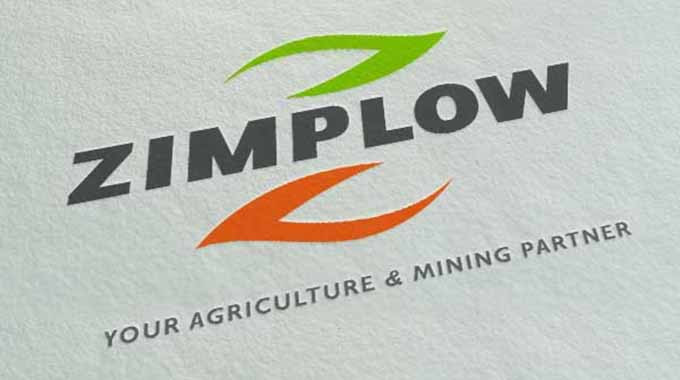
Zimplow Holdings Limited is one of Zimbabwe’s most diversified engineering and manufacturing groups, a company whose fortunes often mirror the country’s economic pulse.
Founded in 1939, Zimplow has evolved from a maker of animal drawn implements into a multi-cluster industrial group with interests spanning agriculture, mining, infrastructure, logistics, and power systems.
Its operating model is designed around a “one-stop” structure, providing both equipment and the service ecosystem around it, from spare parts to technical support.
The group’s business is structured around several core units: Mealie Brand and Farmec in agriculture; Tractive Power Solutions (TPS), CT Bolts, and Powermec in mining and engineering; and Scanlink in logistics.
This diversification is both Zimplow’s strength and its challenge, insulating the group from agricultural cyclicality, but exposing it to the capital constraints and currency volatility that characterise Zimbabwe’s industrial economy.
How the slide began
Zimplow’s recent financial trajectory has reflected both macroeconomic strain and sectoral disruption. The FY2024 loss before tax of US$3,4 million followed years of margin compression due to drought induced agricultural slowdown, foreign currency shortages, and elevated input costs.
The FY2024 results showed agricultural units accounted for nearly 97% of operational losses, with El Niño conditions suppressing demand and delayed farmer payments constraining cash flow.
- Addressing unfair trade key to transforming African food systems
- Urgent economic structural transformation necessary
- Society must change its negative perception on disability
- Residents finger ZETDC employees in cables theft
Keep Reading
However, the HY25 interim numbers show early signs of stabilisation. The group recorded a loss before tax (LBT) of US$718 499, a significant improvement from the US$1,1 million loss in the comparable period last year. This narrowing loss suggests management’s cost containment measures and improved working capital discipline are beginning to filter through, even as volumes remain weak.
Rationalising under pressure
Zimplow’s management maintained a cautious stance amid an unregulated informal market, inflationary pressures, and delayed public sector orders.
The agricultural cluster remains subdued. Mealie Brand posted a 7% decline in volumes relative to last year, primarily due to delayed producer price announcements that disrupted export cycles. Farmec continued to face liquidity constraints in mechanised farming, with demand shifting toward smaller implements and used equipment.
In the mining and infrastructure cluster, TPS saw volume pressures as high selling prices, a response to imported cost inflation, created a mismatch with prior year performance. Nevertheless, the unit remains strategically positioned to benefit from increased mining capital expenditure in the second half.
Meanwhile, CT Bolts and Powermec continued to perform within expectations, supported by strong demand for fasteners and power systems, although margins remained tight. The logistics arm, Scanlink, contributed modestly, balancing limited fleet sales with after sales revenue.
Restructuring mealie brand, TPS
To restore profitability, two priorities stand out: cost realignment and market re-engagement. For Mealie Brand, short-term recovery may hinge on aggressive export reactivation once producer price benchmarks are clarified.
Management could introduce seasonally-indexed pricing and forward contracting with regional distributors to hedge against domestic policy lags. Operationally, improving plant utilisation to at least 70% of capacity (from current sub 60% levels) could yield measurable cost efficiencies within two quarters.
For TPS, restoring volumes may require repricing strategies that balance affordability with liquidity realities in the mining sector. Offering structured payment terms or leasing models could rebuild volumes without materially expanding credit risk. If these interventions are implemented decisively, both units could begin showing positive operating contribution by Q4 FY25, though full margin recovery might take until early FY26.
Engineering recovery
Zimplow’s balance sheet reflects substantial capital expenditure over recent years, from plant retooling and capacity upgrades at Mealie Brand to expanded engineering infrastructure for TPS and CT Bolts.
These assets provide operational headroom that, if fully-utilised, could support double-digit revenue growth in the mining and power segments.
While management has not disclosed explicit ROI targets, reasonable assumptions suggest achieving asset turnover of 1,2–1,4x and operating margins above 10% could translate to a projected return on invested capital (ROIC) in the 12% to 14% range over the next 18 to 24 months, contingent on volume recovery in the mining and industrial base.
Focus, margin outlook
Zimplow’s strategic focus areas; product development, spare parts availability, and cost containment remain critical. The emphasis on higher margin parts and after sales service (especially in Farmec, Powermec, and Mealie Brand) is expected to lift the group’s gross margin by 150 to 200 basis points heading into the 2025/26 agriculture season, provided exchange rate volatility is moderated.
Cost discipline and greater forex denominated revenue exposure will be essential hedges against currency risk. I view these initiatives as incrementally positive rather than transformative, implying that meaningful profitability may only materialise once volumes in the agricultural and mining clusters normalise.
Conclusion
Zimplow’s HY25 results show a business that is stabilising, but one still negotiating structural headwinds. Management’s tone is cautiously optimistic about containing losses, which seems realistic given the contained before tax loss (HY25). The turnaround thesis depends not only on cost control but also on reigniting top line growth in agriculture and mining, where latent capacity now awaits better demand visibility.
Taimo is an investment analyst with a talent for writing about equities and addressing topical issues in local capital markets. He holds a First Class Degree in Finance and Banking from the University of Zimbabwe. He is an active member of the Investment Professionals of Zimbabwe community, pursuing the Chartered Financial Analyst charter designation.











